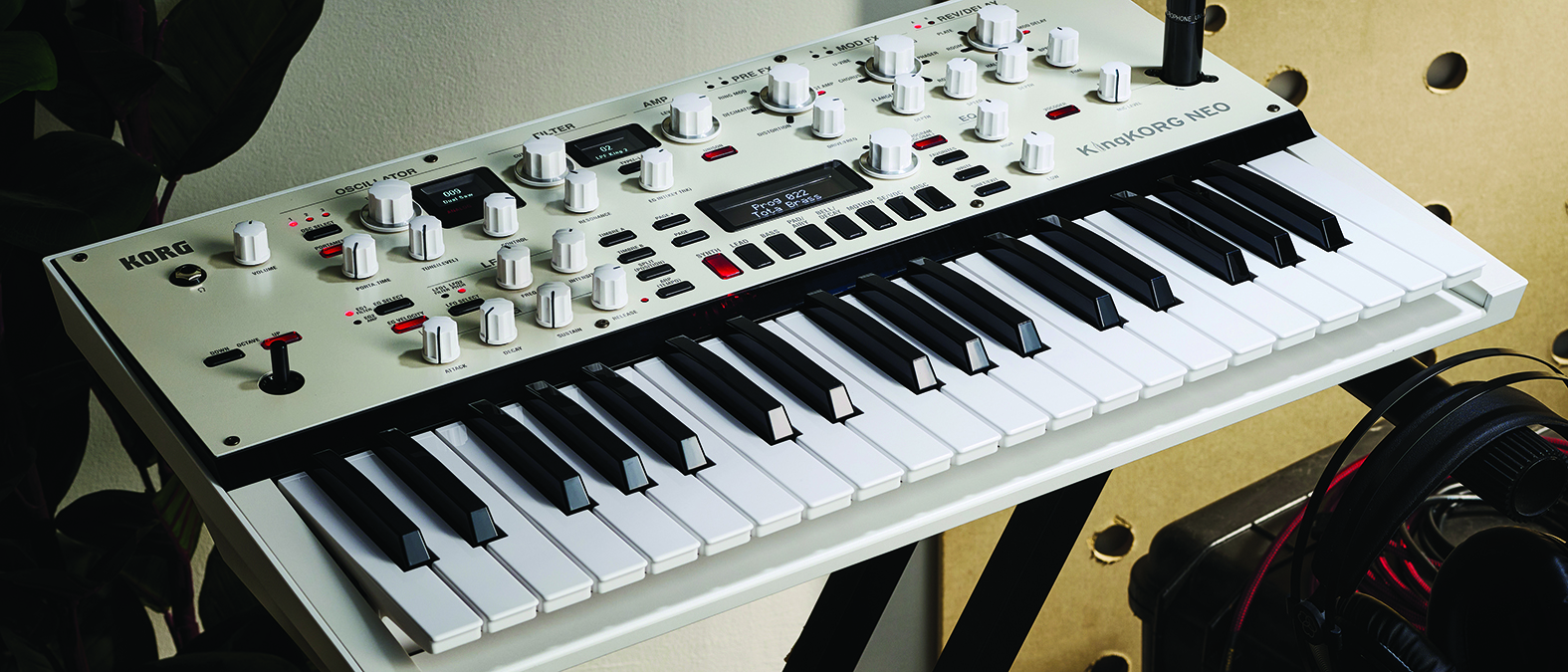MusicRadar Verdict
It’s compact, it’s live-ready… but it’s still an engine from an older synth. And one that software emulates well for way less.
Pros
- +
Has a lightweight yet solid build.
- +
Some great sounds, with excellent polyphony, and the bi-timbral architecture is great.
- +
We like the instant nature of the effects.
Cons
- -
No aftertouch.
- -
No CV/gate out.
- -
Expensive, even next to other 37-key Korg synths.
MusicRadar's got your back
Korg KingKorg Neo: What is it?
KingKorg Neo is the latest 37-key digital synth from Korg which, at first glance, appears to sit neatly alongside the all-new MkII versions of the company’s rather excellent 37-noters, the Modwave, OpSix and Wavestate. Heck, let’s even put it next to the Minilogue XD, although that particular synth is mostly analogue and only boasts eight voices of polyphony, whereas KingKorg Neo has 24 and is firmly digital.
But really, in actual fact, KingKorg Neo shouldn’t be considered as a member of this particular gang, as it is actually a follow-up to Korg’s original and bigger KingKorg, released back in 2013, and a synth that did well – or eventually well enough to result in this update – even though it was a VA released on the cusp of the analogue synth revival.

The Neo – that’s Greek for ‘new’, or the guy from The Matrix, you decide – updates that synth by putting it in this familiar, compact 37-key form, giving it a new look and feel, and updating some of the waveforms at its core.
This engine is bi-timbral, so you can effectively layer two sounds together or trigger them separately. Much of the rest remains the same as, or similar to the original, so Neo has a three-oscillator-per-voice architecture, and still uses the same eXpanded Modelling Technology for its four-way digital engine.
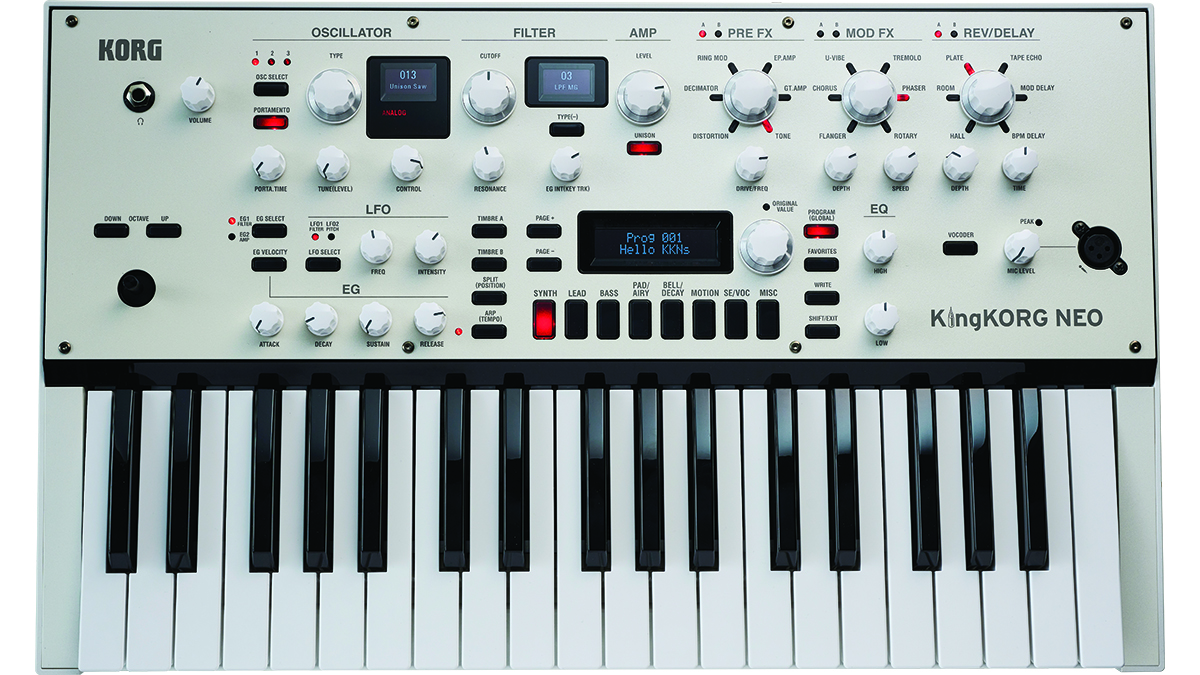
This engine has a slightly bigger number of waveforms (138) at its core, but the numbers have shifted. You still get 32 analogue/noise waveforms, but the DWGS (Digital Waveform Generator System) waveforms reduce to 40 from 64, while the PCM (sample-based) ones increase from 30 to 65, and you still get an audio in for a vocoder.
Neo features the same number (18) of filter types, some modelled on classics like the MiniMoog, MS-20 and TB-303; it has the same number of presets (200 plus 100 user-generated slots); and even the 18 effects – spread six each over Pre, Modulation and Reverb/Delay categories – are the same.
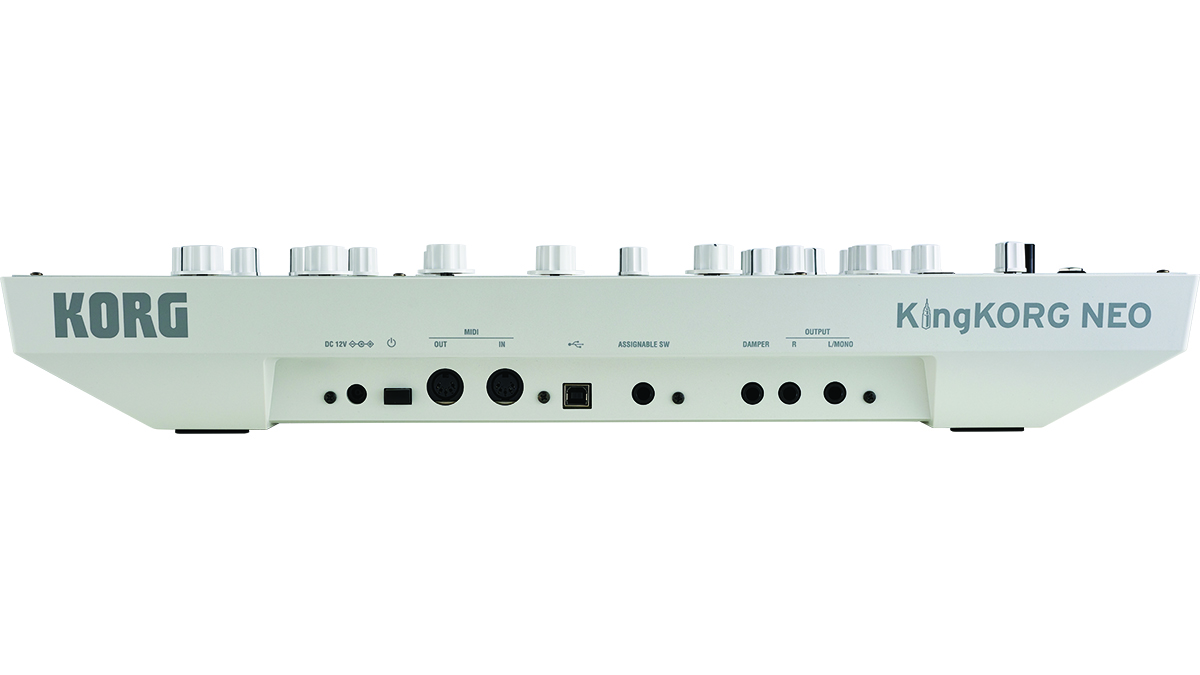
Korg KingKorg Neo: Performance and verdict
The design is new, though, and the KingKorg certainly fits the 37-key synth format. All the important knobs are given a bigger status – the oscillator type, filter cutoff and amp level, for example. And the three screens also impart the important details: oscillator type (again); filter type, which you have to step through with the button beneath; and the main screen which highlights data values when you twist a dial, or preset names.
The effects section is the most easy-to-use, as it takes up an inordinate amount of room, with three selectable effect types, with their six options on large dials, and five parameters covering the three parts on smaller dials beneath.
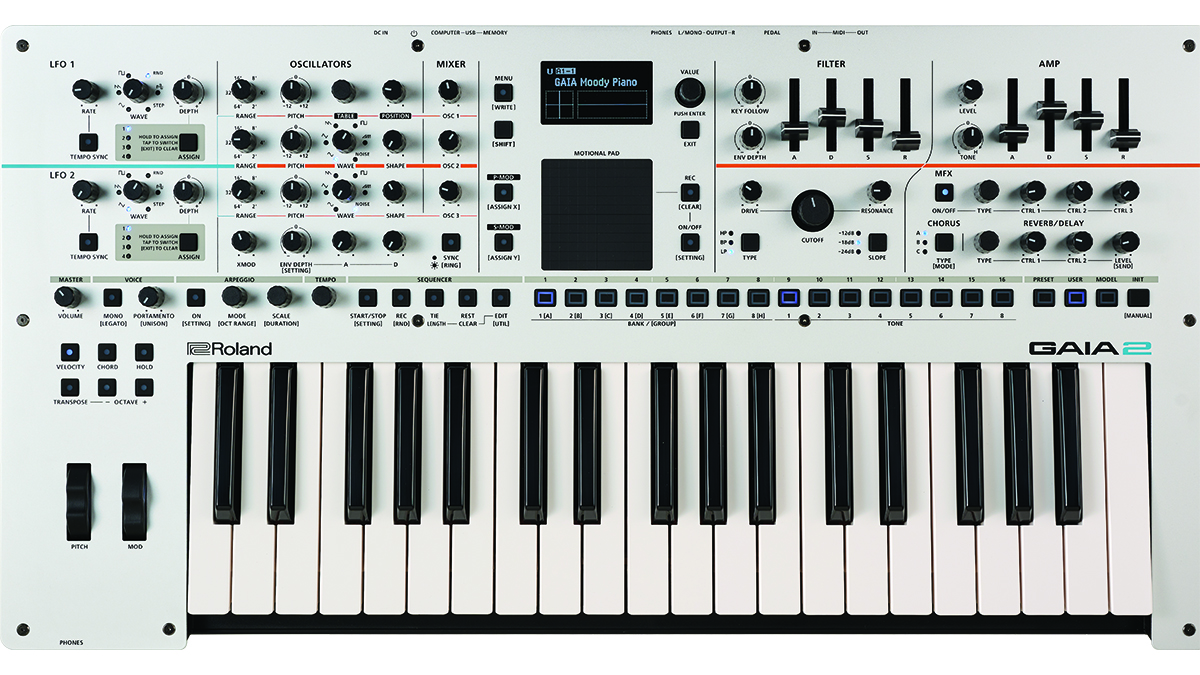
• Roland GAIA 2: Another recent update to a 2010’s VA synth, GAIA 2 is not without its flaws, but shares some Neo features, has a similar feel (and look), and has 22 voices of polyphony. Currently retailing at less than launch too.
• Modal Cobalt8: Only eight voices of polyphony but a great-sounding VA for much less cash, although still some question marks over Modal as the website is currently kaput.
• ASM Hydrasynth Explorer: Another 37-key hardware synth with some VA pretensions and wavetable additions; lacks the polyphony (only eight notes) but does street much cheaper and it additionally boasts a polyphonic aftertouch option.
Step through the presets and an area beneath the screen handily lets you know which of the four engine types is being used. It’s fair to say that most of the 200 sounds are very analogue in nature, and even those that access the PCM engine are often classic in sound. They are all well programmed, though, with modulation extras where needed, so the joystick will often give you extra growl on bass sounds where appropriate (for more on modulation, see below).
Those bass sounds are in abundance, as are pads and strings to make the most of those 24 notes of polyphony. Shorter, more percussive sounds tend to use the PCM engine, while the digital wavetable sounds aren’t often quite as evolving or different as you might expect, although, again, the modulation is on hand to easily add more dynamics to any preset.
The effects seem to be on a par with the original KingKorg, and while some have criticised this, we think the set of three on offer per program is pretty decent, as they can really alter the character of a sound way beyond what is presented to you.
The Drive dial and Pre-FX deliver some proper dirt, a lot more than you might expect from what is a digital synth. (The original KingKorg had an analogue valve bolted on for some extra colour, but that somewhat gimmicky extra has now gone.)
The reverbs and delays are also instant and easy to edit, and while it does not offer perhaps as many effects as some processor-loading softsynths do these days, that hands-on control over them is so well implemented, with often such varying results, that you will end up using them a lot.
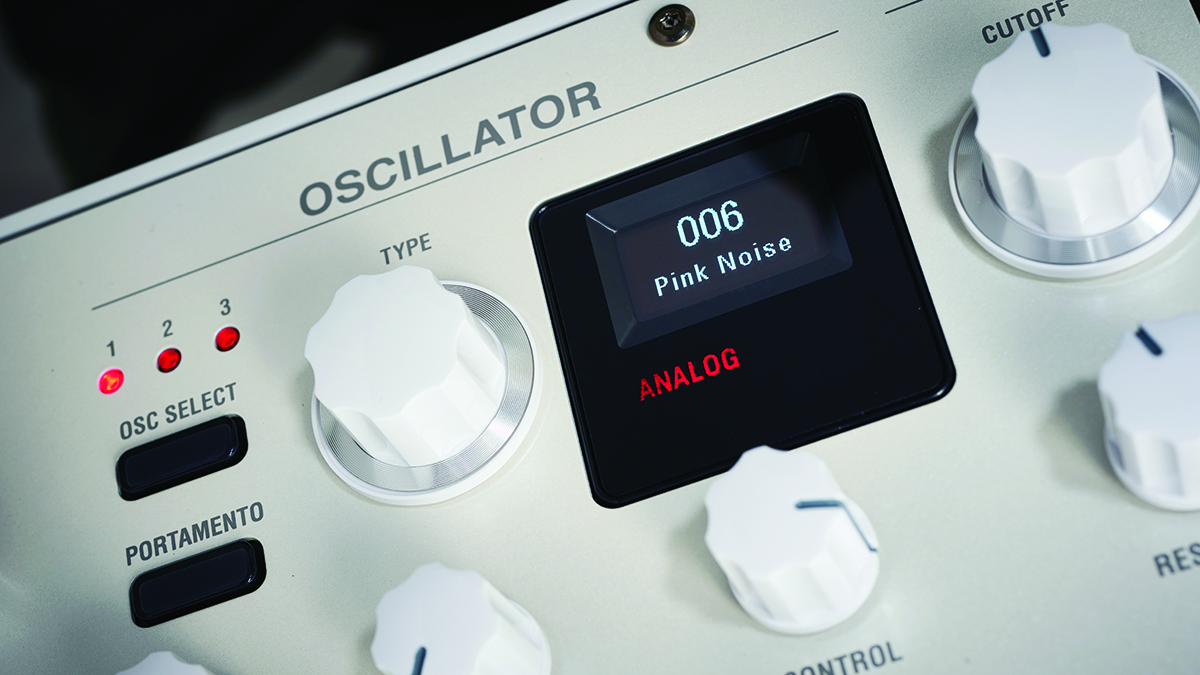
Other features worth highlighting include the arpeggiator which, with a press of the shift key, has parameters to adjust including Latch, Tempo and Type. You can choose from six of the latter, including Up, Down and Random.
Latch it on while playing one of the big bass sounds and you will almost certainly get lost playing with the joystick and filter controls for a long while. In fact, this shows up the performance side of Neo well – it is a good synth in this regard, with a broad range of sounds for live shows.
The on-board vocoder could also be a reason you go for KingKorg Neo. As with other Korg synths that feature a similar vocoder – we’re looking at you, MicroKorg – a gooseneck mic is supplied. You simply plug it into the main front panel, select the SE/Voc sound category, hit the Vocoder button and play/speak away.
It works as you'd expect, and you don’t get embarrassed hearing your own dulcet tones, but there seems to be little to tweak the robotic-ness. However, those onboard effects come to the rescue and can liven up whatever you are doing, so it’s a solid feature.
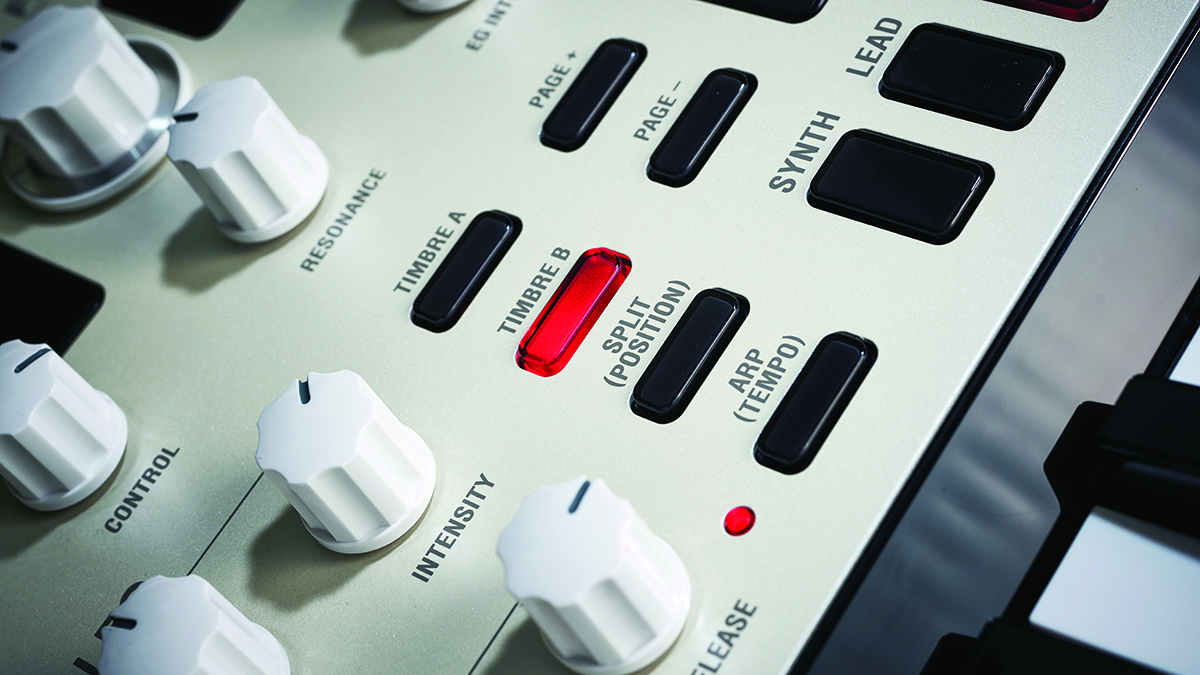
Finally a quick note on the Neo’s bi-timbrality. Two buttons allow you to access Timbres A and B and effectively offer the same features and options per sound – two synths in one if you like. You can easily choose to hear them either in isolation or split across the keyboard.
Switch to page 3 of the edit pages using the Page + button, and you can layer both together for some truly massive sounds, although you’ll need to watch that polyphony here. It’s a neat and well-implemented feature, though.
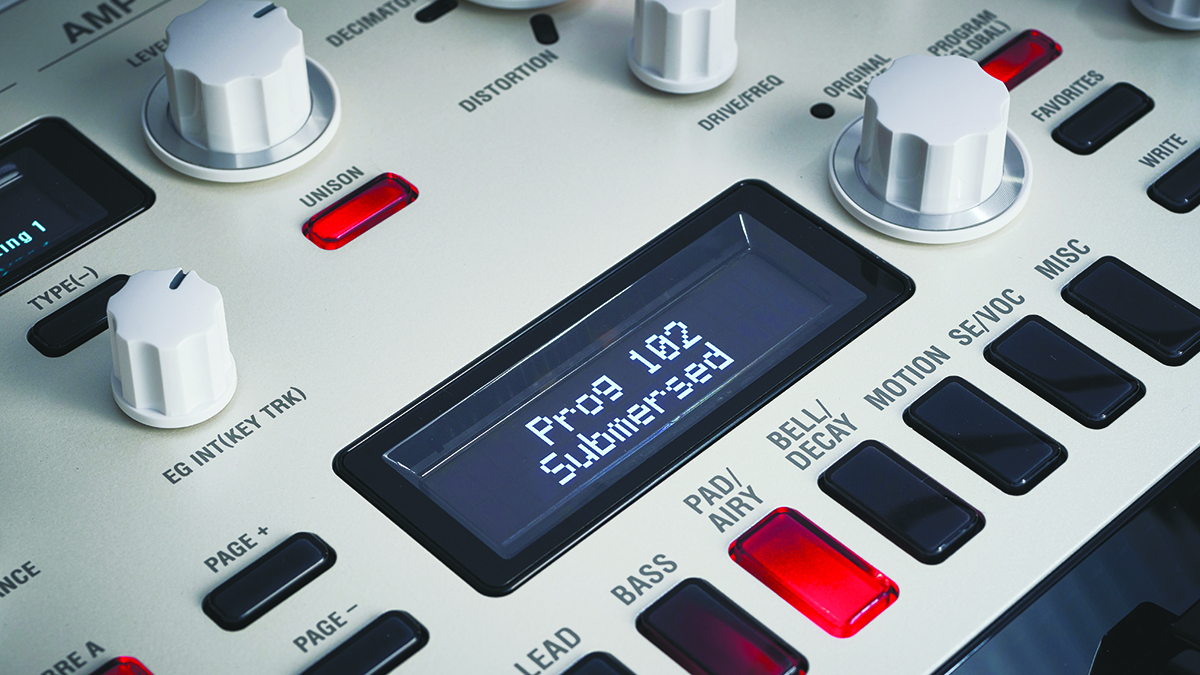
Neo has hidden The Matrix
While not, on the face of it, the most obviously well-endowed synth, modulation-wise, the LFO and envelope controls on Neo are easy to use. And, as it turns out, some hidden modulation extras can add other movement to its sounds.
You can select between two envelopes (hard-wired to filter or amp) and LFOs (controlling both filter and pitch), with larger ADSR dials available for the former, and frequency and intensity (depth) controls for the latter.
Neo also has a joystick, which acts as a pitch-bend (left/right) and mod wheel (up/down) with the latter assigned to vibrato depth. Extra LFO parameters are accessed by pressing the Bell/decay button beneath the main screen to access different LFO shapes or press Page ‘minus’ to access five extra parameters for each envelope.
More hidden modulation fun can be accessed by way of the Motion button. Here you can select one of 12 sources (including the LFOs, envelopes, joystick, velocity, and MIDI) on each of the six matrix slots.
It’s no MatrixBrute in terms of flexibility, but there is more routing than meets the eye, and you can get some nicely evolving sounds going.
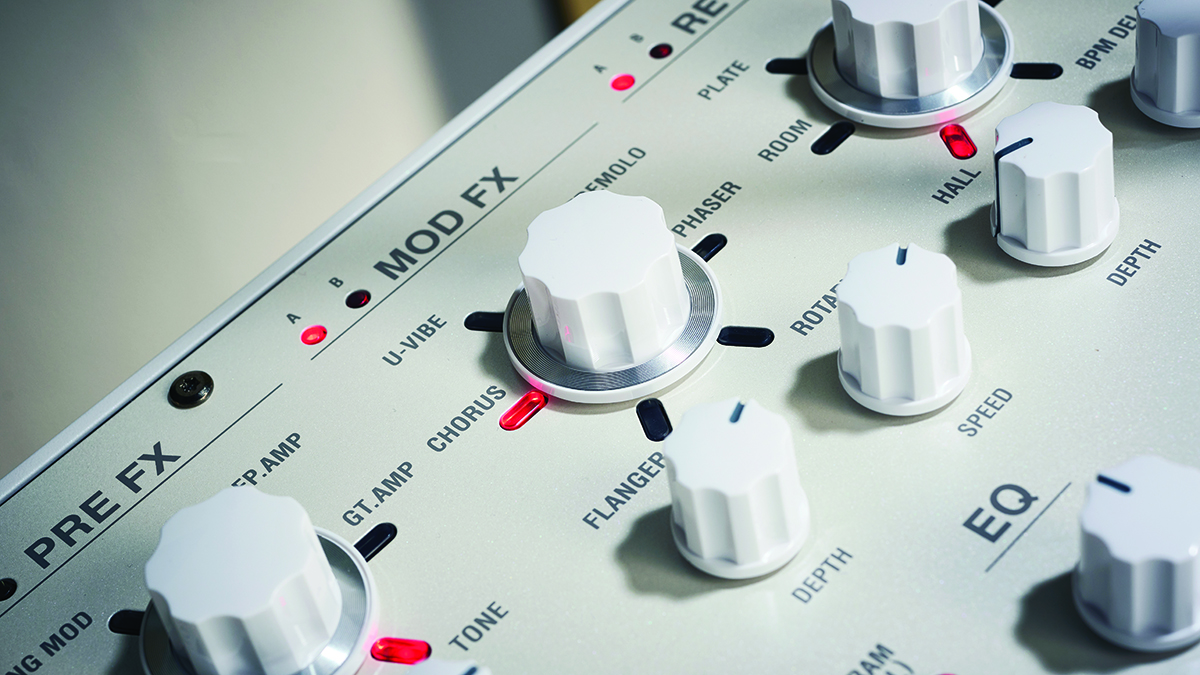
Conclusion
KingKorg Neo is a curious synth that most definitely fits in with Korg’s current 37-key synth range – almost down to the millimetre – but also stands out like an overdressed cousin at a wedding. Price-wise, for example, we can certainly forgive the hardware Opsix, Wavestate and Modwave for the few hundred pounds extra that you’ll pay over their software versions, as you get lovely synths, with hands-on controls, even though, sonically, the hardware and software will be the same.
KingKorg Neo, on the other hand, is not only a similar kind of digital VA to many software synths, but it’s way more than ‘a few hundred quid extra’, at 30% more than its 37-key stablemates. And for that £949 price tag you could consider getting a true analogue synth or two; we’d gladly grab a couple of minilogue XDs, for example, and Behringer’s UB-Xa isn’t a huge leap up (just £50 more in some places).
The Neo is therefore struggling at its price point versus spec, pretty much like its big competitor Roland GAIA 2 did when it was released, and which now consequently sells for less.
For that £949 price tag you could consider getting a true analogue synth or two
At times Neo does feel like the original 11-year-old synth just squeezed into a new case, but it is not only an improvement over the original in terms of this compact design, but also has updated synth waveforms. And like the original, it is a fine performance synth – and is now even lighter, yet solid enough to be taken on the road with some great sounds and hands-on features, although the 37 keys might limit proper players.
But we have to return to that price, and can’t help thinking that it’s Neo’s Achilles heel. And yes, continuing the ‘what else can you get for the cash’ comparisons, £949 will pretty much get you a MiniFreak and a Minilogue – a mighty Mini combo, if ever there was one – and there are many more VA alternatives with extra aspirations, as we list above.
Neo is good, then, but we might just stick with the blue pill this time.
MusicRadar verdict: It’s compact, it’s live-ready… but it’s still an engine from an older synth. And one that software emulates well for way less.
Korg KingKorg Neo: Hands-on demos
Korg
loopop
BoBeats

Accurate Beats
Korg KingKorg Neo: Specifications
- KEY FEATURES: 24-voice XMT (eXpanded Modelling Technology) VA synth; 2-part multi-timbral; three oscillators from 138 waveforms (32 VA & noise, 40 DWGS, 65 PCM, and MIC In); 37-key velocity and velocity release keyboard; 1 filter from 18 types (7 LPF, 5 HPF, 6 BPF); 300 programs (200 preset, 100 user); 3 program effects from 18 types (6 pre, 6 modulation, 6 reverb/delay); arpeggiator: up to 8 steps; 3 OLED displays; vocoder; i/0: 2 x 1/4” jack outs, headphone out, damper pedal, assignable pedal, and audio in (mic/XLR), MIDI in & out, USB B.
- DIMENSIONS: 565 x 338 x 92mm.
- WEIGHT: 3.1kg.
- CONTACT: Korg
Andy has been writing about music production and technology for 30 years having started out on Music Technology magazine back in 1992. He has edited the magazines Future Music, Keyboard Review, MusicTech and Computer Music, which he helped launch back in 1998. He owns way too many synthesizers.
With its latest free update, Ableton has finally turned Note into the app I always wanted it to be
Technically capable, but struggle to make your tunes sound musical? 5 simple music theory hacks to make your tracks stand out
"Despite its size, it delivers impressive audio quality and premium functions as well as featuring a good selection of inspired sounds": Roland GO:Piano 88PX review
